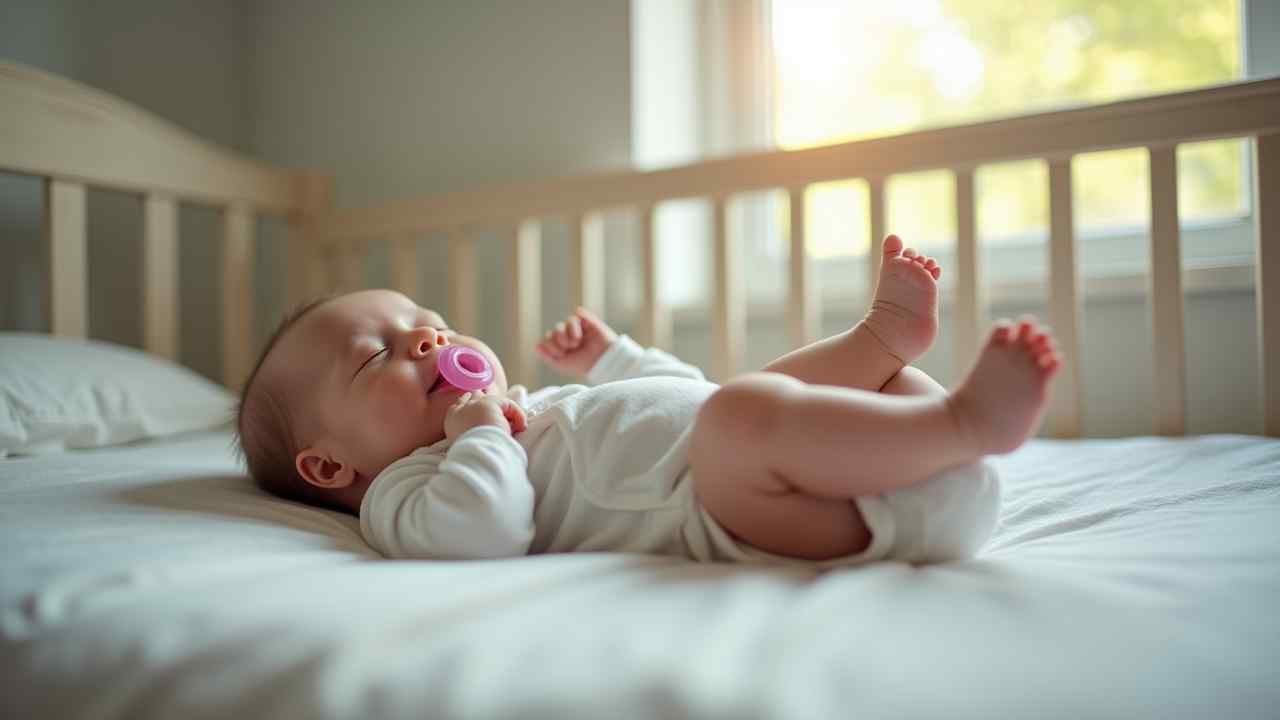
👶 Can a Newborn Sleep with a Pacifier? A Guide to Safe Sleep
👶 Can a Newborn Sleep with a Pacifier? (A Guide to Safe Sleep) 👶
As a new parent, you are flooded with questions about your baby's safety. This is especially true when it comes to sleep. You might wonder about every little detail. A very common and important question is: can a newborn sleep with a pacifier?
The simple answer is yes. Not only is it safe, but it is also recommended by major health organizations. The American Academy of Pediatrics (AAP) suggests offering a pacifier at naptime and bedtime. This is because it has a major protective benefit.
This guide will explain the benefits of pacifier use for sleep. We will also cover common concerns like nipple confusion. Most importantly, we will outline the crucial safety rules. Let's create the safest sleep environment for your baby. ✅
⭐ What is the Biggest Benefit of Using a Pacifier for Sleep?
The single most important reason to offer a pacifier for sleep is SIDS risk reduction. SIDS stands for Sudden Infant Death Syndrome. Numerous scientific studies have shown a powerful link. Offering a pacifier is associated with a significantly lower risk of SIDS.
How does it help?
The exact reason is not fully understood. However, experts have several theories. The sucking motion may help to keep the baby in a lighter state of sleep. This makes them less likely to stop breathing. The pacifier itself also helps to keep the airway open. It may prevent the baby from rolling completely onto their stomach.
Because of this strong protective effect, a pacifier is considered a valuable safe-sleep tool. This is the main reason why a newborn can sleep with a pacifier.
🤔 What About "Nipple Confusion" and Breastfeeding?
This is the most common concern parents have. They worry that the pacifier's artificial nipple might interfere with breastfeeding. This is a valid concern in the very early days. The sucking motion for a pacifier is different from that for a breast.
For this reason, the AAP has a specific recommendation. For breastfed babies, you should wait to introduce a pacifier until breastfeeding is well-established. This is usually around 3 to 4 weeks of age. By this time, your baby is an expert at latching and feeding. A pacifier is unlikely to cause any confusion.
For babies who are formula-fed, you can introduce a pacifier right from birth. There is no risk of nipple confusion in this case.
🚫 What Are the Safety Rules for Using a Pacifier During Sleep?
While using a newborn pacifier for sleep is safe, you must follow a few critical safety rules. These are non-negotiable. They are essential for preventing choking or strangulation hazards.
- Never Attach it to Anything: This is the most important rule. You must never use a cord, string, or ribbon to attach the pacifier to your baby's clothing, hand, or crib. This is a major strangulation risk.
- Offer, Don't Force: Gently offer the pacifier as your baby is falling asleep. If they spit it out while sleeping, you do not need to put it back in.
- Use a One-Piece Pacifier: Choose a pacifier that is a single, molded piece. This prevents parts from breaking off and becoming a choking hazard.
- Keep it Clean: Sterilize pacifiers regularly, especially for a young newborn.
When used correctly, a pacifier is a safe and beneficial tool. It can help to soothe your baby. Most importantly, it is a simple step you can take to reduce the risk of SIDS. 😴